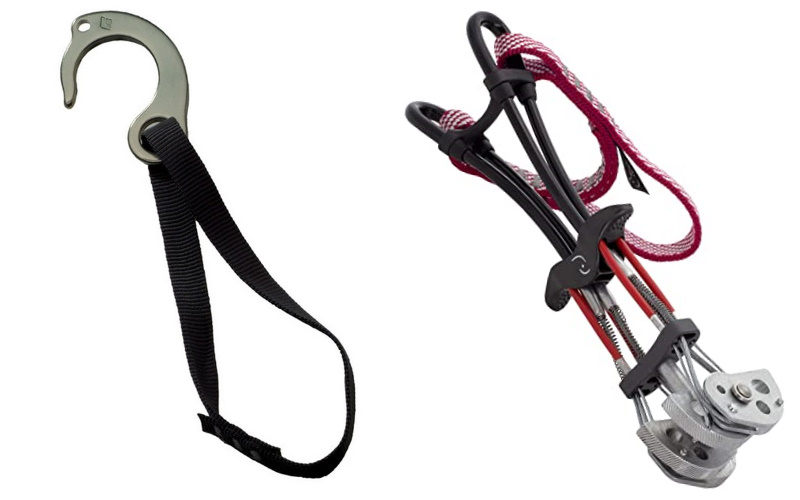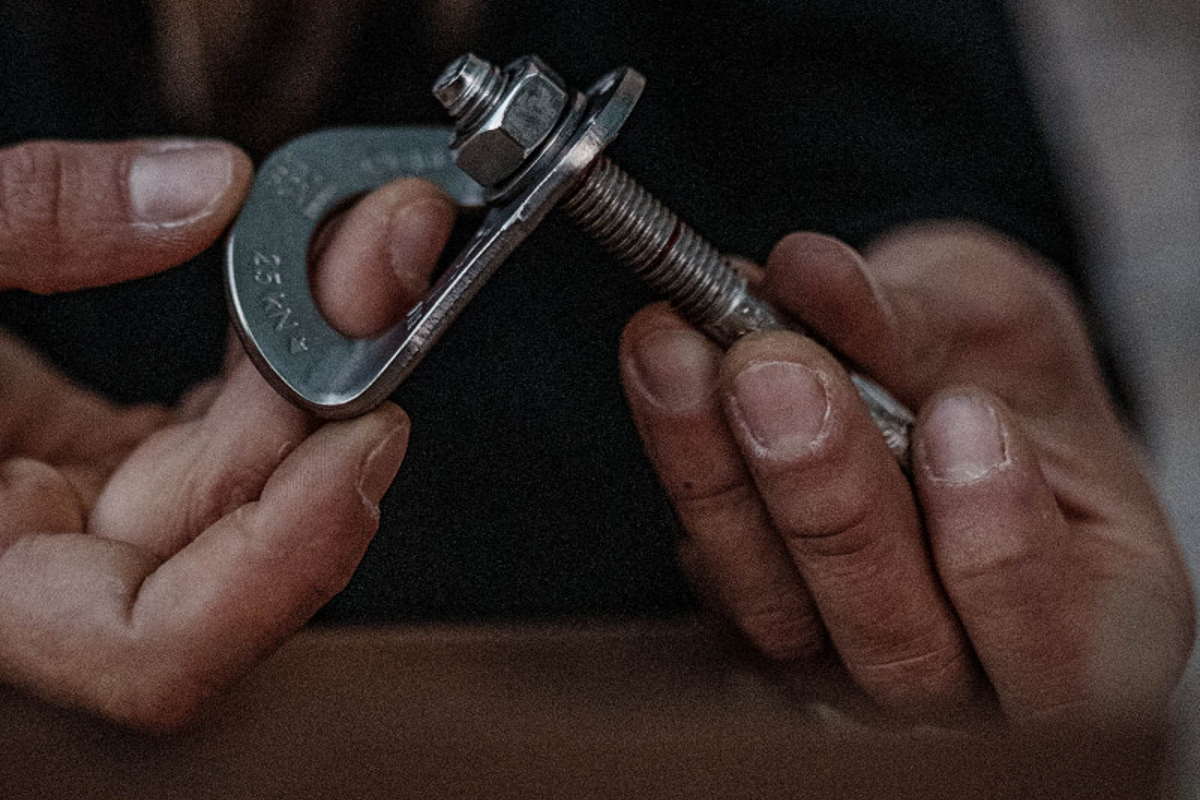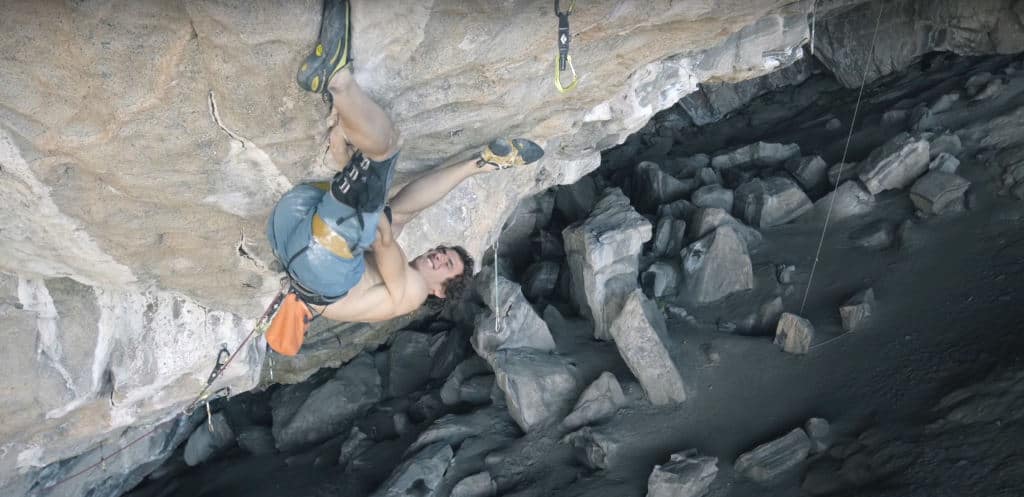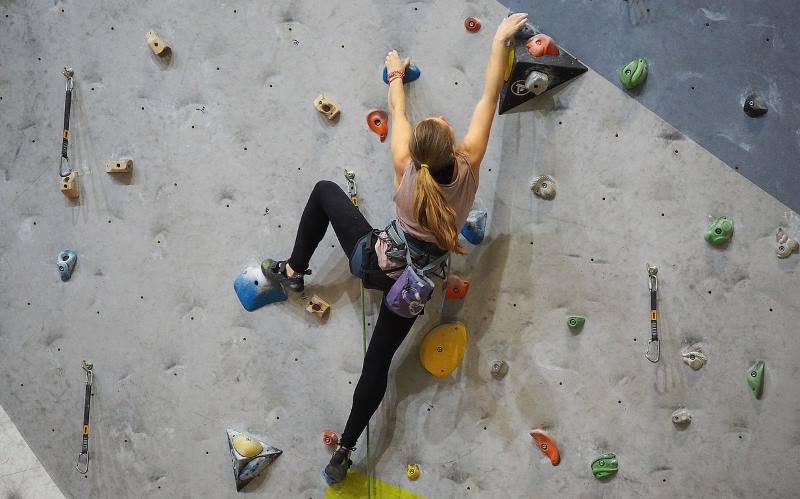French free is one of climbing’s rarer terms. To “french free” a route is often used a bit of an insult or a description of free climb gone a little awry. Nerd out with us about climbing jargon and the history of the term!
Climbing uses all sort of terms to say how a route was climbed. Whether that means what gear was used, how many tries it took, or the style of the ascent. French freeing is an older and less used one but still helpfully describes a pretty common tactic.
What Is French Free Climbing?
French freeing is a term used when you climb basically all the moves free but might once or twice pull on a bit of gear. It happens a lot and no-one particularly cares unless you claim you did something totally free or you’re a professional.
If you’re totally new to climbing then you should most rock climbing is done free as in the style is done as a free climb. Free climbing simply means using your hands and feet to ascent, with the rope and safety gear there only to catch a fall. The gear isn’t there to pull on or aid you actually getting up the route
French freeing means doing something mostly free.
Free solo climbing is when you free something completely alone – aka solo. No harness, no rope, no way off apart from climbing up or down by yourself. Read What Is Free Solo Climbing?
Looking For The French Free Climber?
If you’re after a free solo climber from France, that’s probably Alain Robert. Known as the French Spider-Man, he climbs famous buildings around the world without any safety gear apart from his chalk and climbing shoes.
He actually free solos, not French free climbs. Climbing terms can be a lot…
Why French Free Climb?
Originally it was used as a more efficient and much faster way of getting up a wall. Some french climbers at more local crags were training towards alpine ascents. In alpinism getting stuck or taking too long on a route can mean sleeping on a cold, windy ledge overnight.
French free made it possible to focus on climbing the pitches you could do and just getting past the moves you couldn’t.
Most casual climbers going out to do a big multi-pitch will do it at some point. If your aim is to have a big day out of climbing then go for it. If you absolutely must redpoint every pitch then feel free to lower, pull the rope, and try again completely free.
For the most part though as long as you don’t lie about how you did something most people don’t care. Climbing is personal. A great example is when at 63 years old Mark Hudon climbed the “Freerider” route on El Cap with a younger climbing partner Jordan Cannon.
His aim was to be the oldest person to free the route – which he did basically the entire way. In the end on the hardest sequence on the hardest pitch he pulled through for a few moves. Overall climbing it “as free as can be”.
Where Did The Term French Free Come From?
The term and tactics for “French free” came from the same time and place that sport climbing and the new tactics of rap bolting came from – the Verdon Gorge and surrounding crags in France in the 70’s.
Before then aid climbing and bolting while on the route were the tactics used on harder, blanker climbs. As climbers got better they wanted to do as much of a route “free” as possible. Sport climbing allowed for bolts to be placed on rappel for safer climbs. For other routes the prevailing style changed to be mainly free but allowed for some wiggle room.
Climbers might use hooks or beaks – commonly used in aid climbing – to get past certain areas. Lots of things could fall into being french free, pulling on quickdraws, using a clip stick, even traversing to easier sections off route.
Previously routes were done “by any means” which could involve a lot of hammering pins in and other things that could damage rock. French freeing was an arguably healthier in-between.
Sometimes saying you or someone else “french free’d” a route is a bit of a tongue-in-cheek insult or jab. Nowadays you’d probably just call it pulling on gear.
Mostly no-one cares too deeply about the style you climbing a route in as long as you didn’t lie or damage a route. Facebook commenters and old-school forums may disagree.
What Gear Is Used In French Free Climbing?
Most people when considering getting up a route with a bit of help will just use a cam. Pushing a cam as high as you can, then clipping a sling or quickdraw to pull on is the easiest way to do it.
If you’re trad climbing you’ll most likely have a cam and will know how to place and pull on them very fast. You can then bump them up cracks or use them as a protection placement.
Some climbers with aid gear will take a fifi hook on a sling. This can be use to reach up and stick into a crack or hold on to a small hold, then pull on.

Is Hangdogging The Same As French Freeing?
When people report their routes on online logbooks they’ll often note how they did the climb. Sometimes you can mark it as “French Free” or “dogged” aka hang-dogged.
French free normally refers to pulling on a bit of gear. Hang dogging means resting on the rope mid-climb. It was used as an insult to climbers who didn’t instantly lower from a route if they fell, instead hanging from the spot and practicing or trying again.
The ethics of climbing has change massively over the years. Even when sport climbing became a thing and people started using bolts for protection – hanging from the rope wasn’t completely accepted.
Typically if you fell on a move you’d lower down and start from the bottom again. With harder routes this would mean getting a lot of work done (and energy spent) on the lower moves but often repeatedly falling at the “crux” or hardest part of the route.
After a certain point people would just hang on the rope for a while and rest. You could plot out the moves ahead, maybe cheat a little to the next bolt, then come back down to practice the hardest part. This is referred to as hangdogging or being a hangdog.
While it was pilloried in the early days its now common practice. When deciding to project a hard route you’ll often go “bolt to bolt” aka rest at each bolt for the early part. Once you hit the crux, this is when you start to use your energy to dial in the key moves.
That leaves you to lower down and give the route a proper try as a redpoint without having spent a lot of energy on it. So basically every high level climber is a massive hang dog but no-one cares. We still value flashes and onsight climbing but at the highest level we expect most routes to be redpointed and often take weeks to do.




